#michel fokine
Photo
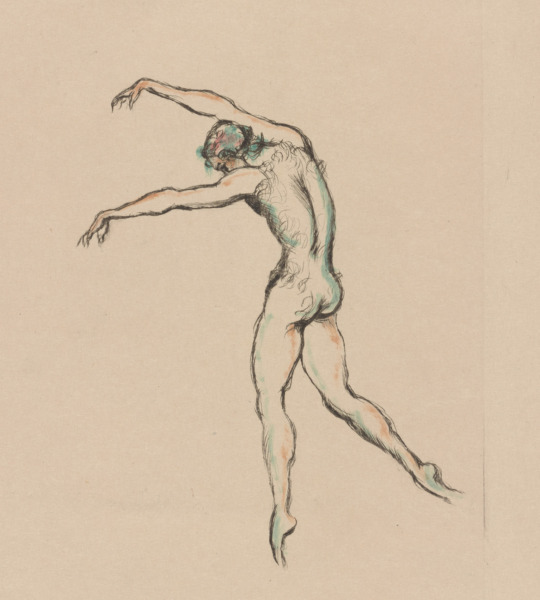
Arthur Grunenberg, Nijinsky in Spectre de la Rose (1920s)
New York Public Library, New York.
235 notes
·
View notes
Photo
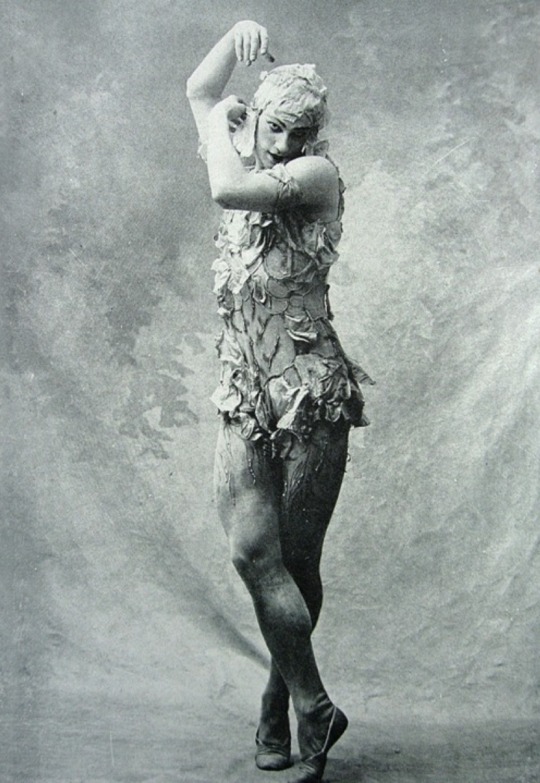



Vaslav Nijinsky in a costume by Léon Bakst for the ballet Le Spectre de la Rose by Michel Fokine, 1911.
Nijinsky's silk elastic costume is covered with silk rose petals. Nijinsky was stitched into the costume for every show. After every show, the wardrobe mistress would touch up the petals with her curling iron.
Nijinsky's make-up was an important part of the costume design. Romula de Pulszky, later to be his wife, wrote that he looked like "a celestial insect, his eyebrows suggesting some beautiful beetle". Ostwald writes that Nijinsky's costume was like a ballerina's.
Sometimes, petals would become loose and fall to the stage floor. Nijinsky's servant Vasili would collect the petals and sell them as souvenirs. It was said that he built a large house called Le Château du Spectre de la Rose with the profits from the sale of the petals.
#vaslav nijinsky#nijinsky#le spectre de la rose#michel fokine#1911#ballet dancer#ballet#1910s#léon bakst
153 notes
·
View notes
Photo

Michel Fokine as Perseus, 1918
ph. Henry B. Goodwin
60 notes
·
View notes
Text

Le Dieu bleu : [Tamara Karsavina dans le rôle de la jeune fille], 1912. [Photographe présumé : Waléry] | src Gallica ~ BnF

Le Dieu bleu : Légende hindoue en 1 acte / chorégraphie de Michel Fokine. - Paris : Théâtre du Châtelet, 13-05-1912
view on wordPress
#tamara karsavina#walery#ballets russes#dance costume#danseuse#Tänzerin#danzatrice#oriental costume#dance pose#tanzpose#dancer#Waléry#bailarina#exoticism#Laryew#yrelaw#le dieu bleu#Lucien Walery#michel fokine#orientalism#role portrait#Rollenporträt#rollenportrat#1910s
34 notes
·
View notes
Photo
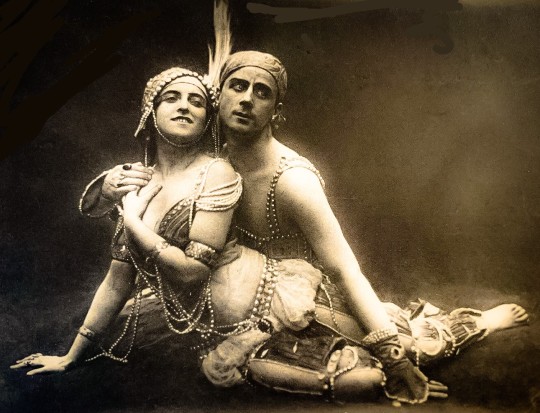
1910 Michel Fokine and Vera Fokina as the Golden Slave and Zobeïde in the Ballets Russes production Scheherazade. Costumes by Léon Bakst.
Scheherazade is a major character, and the storyteller, of the Middle Eastern collection of tales known as One Thousand and One Nights (also known as The Arabian Nights).
Photo Postcard
#1910#vera fokina#michel fokine#scheherazade#ballets russes#postcard#costume#golden slave#zobeïde#léon bakst#costume design#ballet#leon bakst#the arabian nights#art nouveau#art nouveau costume
9 notes
·
View notes
Text


Michel Fokine in Harlequine costume c.1910.
1 note
·
View note
Text
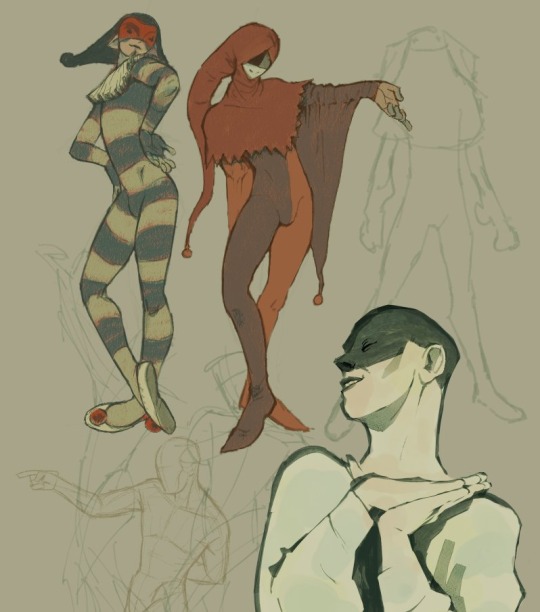
Found a trove of photos of Michel Fokine and felt inspired to do some studies + alternative outfits for Ferris. *UNOFFICIAL* FACES, consider everything a mask since his form is so malleable.
Smitten with the idea of having a ton of looks for this one fellow to keep things interesting between stories.
Here are the reference photos below, which deserve to be looked at.

186 notes
·
View notes
Text
THIS DAY IN GAY HISTORY
based on: The White Crane Institute's 'Gay Wisdom', Gay Birthdays, Gay For Today, Famous GLBT, glbt-Gay Encylopedia, Today in Gay History, Wikipedia, and more … March 31
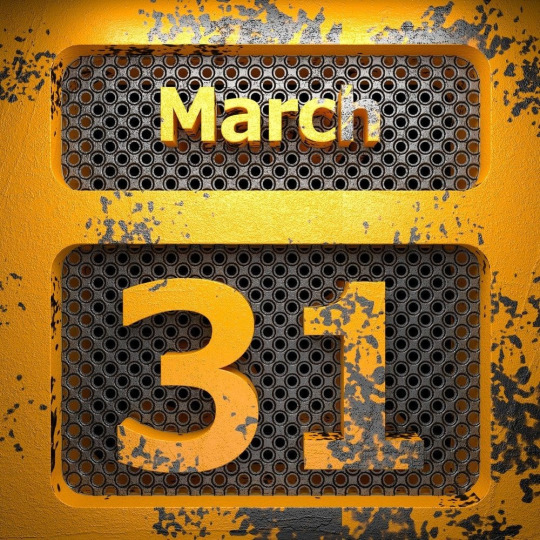


1872 – On this date the Russian choreographer Sergei Diaghilev was born (d.1929). A Russian art critic, patron, ballet impresario and founder of the Ballets Russes from which many famous dancers and choreographers would later arise.
Diaghilev engaged in a number of homosexual relationships. His first important affair was with Dima Filosofov, his cousin, when they were both little more than adolescents; his second with Vaslav Nijinsky, who had already had a homosexual liaison with a wealthy aristocrat, partly in order to help support his mother, sister, and mentally disabled brother (his father had deserted the family). Later affairs of Diaghilev were with Boris Kochno, who served as his secretary from 1921 until the end of his life, and with Anton Dolin, the American dancer. Diaghilev had a close platonic relationship with two women, Misia Sert and the dancer Tamara Karsavina, either of whom he said he would like to have married
One cannot underestimate the influence of Diaghilev's Ballets Russes on the development of 20th century art. But the importance of his sexuality to Diaghelev's creative art is sometimes overlooked. Had he not been a gay man, had he not attracted to his cause the great gay writers, dancers, and artists of the day, the stream of 20th century art may have flowed in an entirely different direction. As Martin Green wrote in Children of the Sun,
"He made the dancer Nijinsky first his lover and then his choreographer, slyly displacing Michel Fokine and inspiring Nijinsky to become the company's chief ballet-creator. Diaghilev's superb taste...was made manifest in this new Nijinksy, the choreographer, and in the ballets he created. These works of art were the children of Diaghilev's sexual passion. The same thing happened later with Leonide Massine and Serge Lifar...These men created ballets under the spell of Diaghilev's passion and he created through them."


1934 – Richard Chamberlain, American actor, born; an American actor of stage and screen who became a teen idol in the title role of the television show Dr. Kildare (1961-1966) and the miniseries The Thornbirds.
Born in Los Angeles, he decided to pursue acting as a career. However, he was drafted into the army for two years, but enrolled in acting classes on his release, where he met his first same-sex love - but fearing the attitudes of the time, the late 1950s, the pair kept their year-long affair secret.
He appeared in his first film in 1960, and the following year won the title role in TV drama Dr Kildare, which ran for five successful years and made Chamberlain a household name and a romantic idol.
He made a number of successful and critically acclaimed movies in the 1970s - Ken Russell's The Music Lovers (1971), proto disaster epic The Towering Inferno (1974), The Swarm (1974) and The Three Musketeers (1974). In the late-70s and 1980s Chamberlain returned to TV and his career thrived in the then-new mini-series genre - Centennial (1978), Shogun (1980) and his best known role as Father Ralph de Bricassart in Colleen McCullough's The Thorn Birds (1983) - a TV phenonemon at the time. When the mini-series fell out of favour, he returned to the theatre where he continues to work.
Chamberlain was romantically involved with television actor Wesley Eure in the early 1970s. In 1977, he met actor-writer-producer Martin Rabbett, with whom he began a long-term relationship. This led to a civil union in the state of Hawaii, where the couple resided from 1986 to 2010 and during which time Chamberlain legally adopted Rabbett to protect his future estate. Rabbett and Chamberlain starred together in, among others, Allan Quatermain and the Lost City of Gold, in which they played brothers Allan and Robeson Quatermain. In the spring of 2010 Chamberlain returned to Los Angeles to pursue career opportunities, leaving Rabbett in Hawaii, at least temporarily.
Chamberlain was outed, at the age of 55, by the French women's magazine Nous Deux in December 1989, but it was not until 2003 that he confirmed his homosexuality, in his autobiography, Shattered Love which describes how he felt obliged to hide his sexuality in order to have an acting career, and detailed affairs with dancer Rudolph Nureyev and actor Anthony Perkins.
Since his coming out Chamberlain has made occasional guest appearances on TV shows such as Will & Grace, Nip/Tuck and Desperate Housewives, usually bringing a new knowingness or just playing gay as he was unable to do for so many years.
In an interview with The Advocate in 2010 promoting his role in ABC's Brothers & Sisters Chamberlain controversially said,
'For an actor to be working [at all] is a kind of miracle, because most actors aren't, so it's just silly for a working actor to say, "Oh, I don't care if anybody knows I'm gay" - especially if you're a leading man.
'Personally, I wouldn't advise a gay leading man-type actor to come out.'


1961 – American composer and pianist Jake Heggie celebrates his birthday today. Born in West Palm Beach, Florida. Heggie is the composer of the operas Dead Man Walking (2000), The End of the Affair (2004), At The Statue of Venus (2005), and To Hell and Back (2006). He is also the composer of more than 200 art songs as well as chamber and concert works.
Heggie started learning the piano when he was five years old. After spending two years in Paris, he continued his studies at the age of 20 at the University of California, Los Angeles, with the pianist Johana Harris (1912-1995), widow of the composer Roy Harris. They married in 1982 and separated in 1993.
In 1998 he was appointed composer in residence to the San Francisco Opera, where his first opera, Dead Man Walking, was first performed in 2000. With a libretto by Terrence McNally and a production by director Joe Mantello, the opera was extensively acclaimed and it ran for two extra performances due to popularity. It has since been seen in 15 international productions. In 2007 alone, Dead Man Walking received more than 50 performances. His second opera, The End of the Affair, was premiered in 2004 at the Houston Grand Opera.
In 2005, Heggie collaborated again with Terrence McNally to create At the Statue of Venus, which opened in Denver. In 2006, he debuted To Hell and Back (libretto by Gene Scheer) in November 2006.
On 29 February 2008, his opera Last Acts, with a libretto by Gene Scheer based on a play by Terrence McNally, opened at the Houston Grand Opera, which commissioned the work in association with the San Francisco Opera and Cal Performances. Last Acts was its working title; it will in future be known as Three Decembers.
On April 30, 2010, Heggie premiered his most recent opera, Moby-Dick (libretto by Gene Scheer) at The Dallas Opera.
Heggie married his partner of eight years, singer aand actor Curt Branom, in October 2008.


1963 – Laurent Daniels, born Laurent Peter Holzamer in Mainz, is a German actor who lives in Berlin.
He is the grandson of former ZDF - director Karl Holzamer.
In 1991, he and David Wilms presented the gay magazine Andersrum, which was broadcast on the local Berlin broadcaster FAB.
From 1997 to 2000 Daniels played the role of homosexual Philip Krüger in Good Times, Bad Times. He also played in the spin-off Großstadtträume in 2000 and tried his hand at singing for a while.
From August 21, 2006 to February 10, 2007 he played the role of Volker Möllenkamp in the telenovela Butterflies in the Belly. In 2007 he appeared in the last episode of Adelheid and her murderers ( Mord à la mode ).
In 2014 he stood in front of the camera for the German production Plan B: Scheiss auf Plan A , which opened in German cinemas on June 8, 2017.

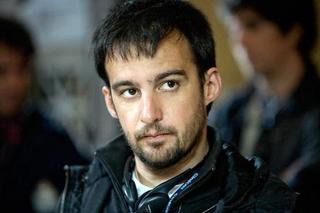
1972 – Spanish filmmaker Alejandro Amenábar was born in Santiago, Chile. In addition to writing and directing his own films, Amenábar has maintained a notable career as a composer of film scores, including the Goya Awards-nominated score for José Luis Cuerda's La lengua de las mariposas.
Amenábar was awarded the Grand Prix of the Jury at the International Venice Film Festival in 2004 for Mar adentro ("The Sea Inside") starring Javier Bardem, and in February 2005 the same film won the Academy Award for Best Foreign Language Film.
In February 2004, Amenábar came out to the Spanish gay magazine Shangay Express.
In 2008 Amenábar shot an epic film called Agora which he wrote with Mateo Gill. Set in Roman Egypt, the film is based on the life of philosopher and mathematician Hypatia of Alexandria.
On 18 July 2015, he married David Blanco.


2014 – Model and activist Geena Rocero comes out as transgender during her TED talk filmed in Vancouver on the Transgender Day of Visibility. She is a Filipino American supermodel, TED speaker, and transgender advocate based in New York City. Rocero is the founder of Gender Proud, an advocacy and aid organization that stands up for the right of transgender people worldwide to gain "self-identify with the fewest possible barriers".


TODAY'S GAY WISDOM
Edward FitzGerald's translation of The Rubaiyat of Omar Khayyam, verses 1 - 12 (of 75):
1
Awake! for Morning in the Bowl of Night
Has flung the Stone that puts the Stars to Flight:
And Lo! the Hunter of the East has caught
The Sultan's Turret in a Noose of Light.
2
Dreaming when Dawn's Left Hand was in the Sky
I heard a Voice within the Tavern cry,
Awake, my Little ones, and fill the Cup
Before Life's Liquor in its Cup be dry.
3
And, as the Cock crew, those who stood before
The Tavern shouted--Open then the Door.
You know how little while we have to stay,
And, once departed, may return no more.
4
Now the New Year reviving old Desires,
The thoughtful Soul to Solitude retires,
Where the WHITE HAND OF MOSES on the Bough
Puts out, and Jesus from the Ground suspires.
5
Iram indeed is gone with all its Rose,
And Jamshyd's Sev'n-ring'd Cup where no one knows;
But still the Vine her ancient Ruby yields,
And still a Garden by the Water blows.
6
And David's Lips are lock't; but in divine
High piping Pelevi, with Wine! Wine! Wine!
Red Wine!--the Nightingale cries to the Rose
That yellow Cheek of hers to'incarnadine.
7
Come, fill the Cup, and in the Fire of Spring
The Winter Garment of Repentance fling:
The Bird of Time has but a little way
To fly--and Lo! the Bird is on the Wing.
8
And look--a thousand Blossoms with the Day
Woke--and a thousand scatter'd into Clay:
And this first Summer Month that brings the Rose
Shall take Jamshyd and Kaikobad away.
9
But come with old Khayyam, and leave the Lot
Of Kaikobad and Kaikhosru forgot:
Let Rustum lay about him as he will,
Or Hatim Tai cry Supper--heed them not.
10
With me along some Strip of Herbage strown
That just divides the desert from the sown,
Where name of Slave and Sultan scarce is known,
And pity Sultan Mahmud on his Throne.
11
Here with a Loaf of Bread beneath the Bough,
A Flask of Wine, a Book of Verse--and Thou
Beside me singing in the Wilderness--
And Wilderness is Paradise enow.
12
How sweet is mortal Sovranty!--think some:
Others--How blest the Paradise to come!
Ah, take the Cash in hand and waive the Rest;
Oh, the brave Music of a distant Drum!


11 notes
·
View notes
Photo
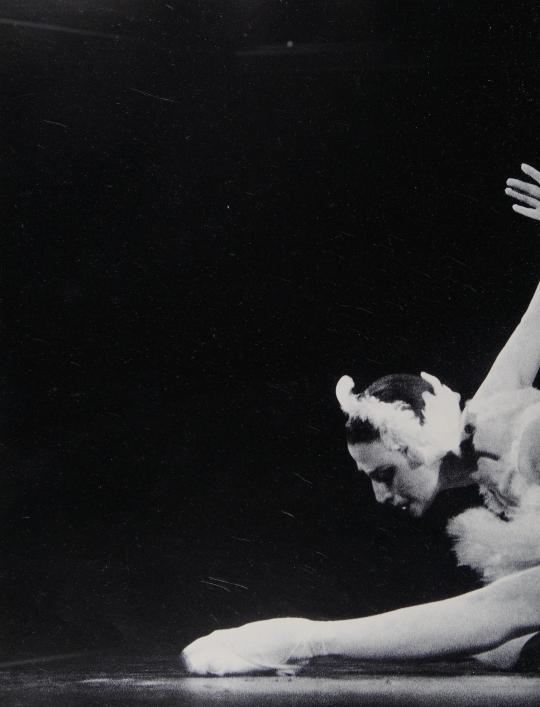
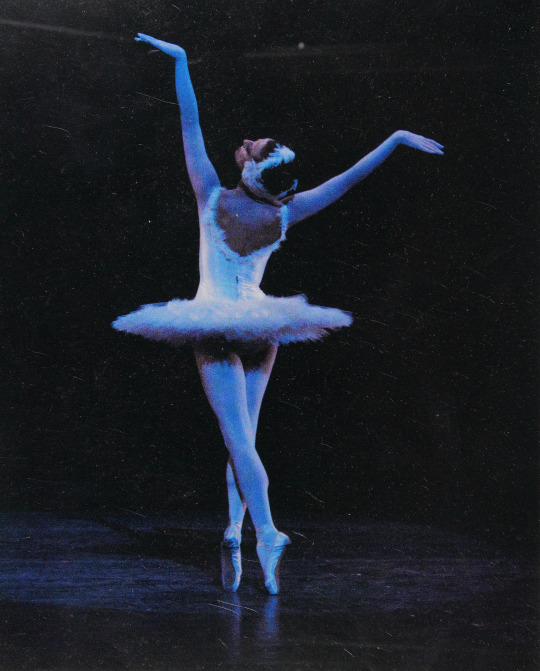
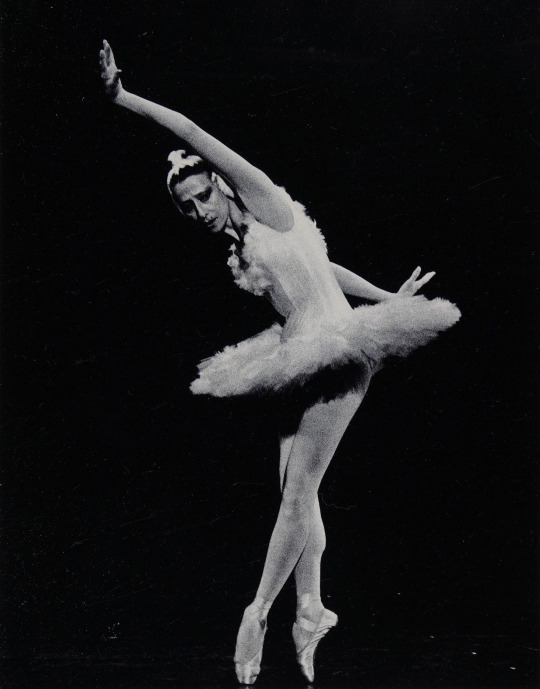

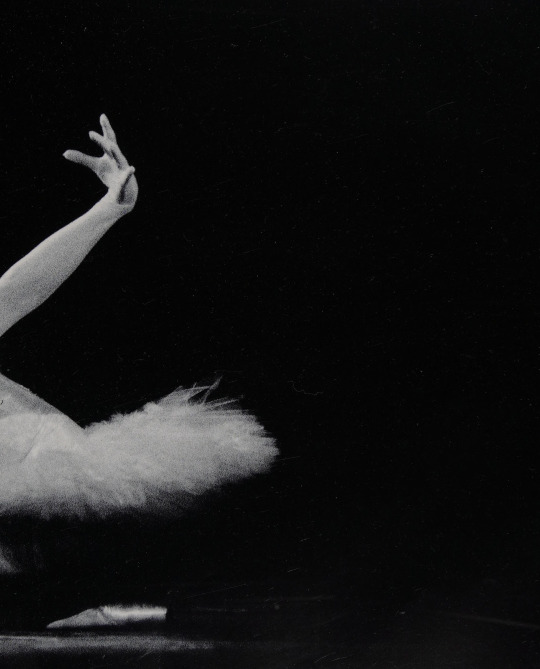
maya plisetskaya photographed performing as the title role in michel fokine’s dying swan by alexander orloff
80 notes
·
View notes
Text
Photos from my Opera Garnier Trip 2 of 3
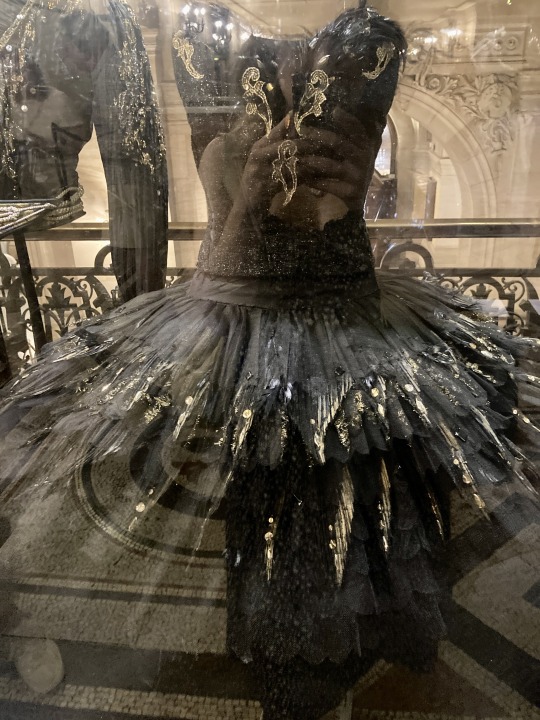
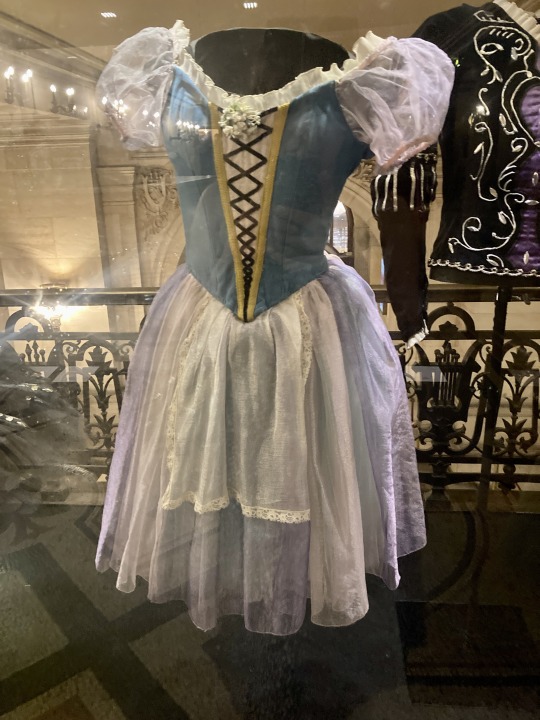

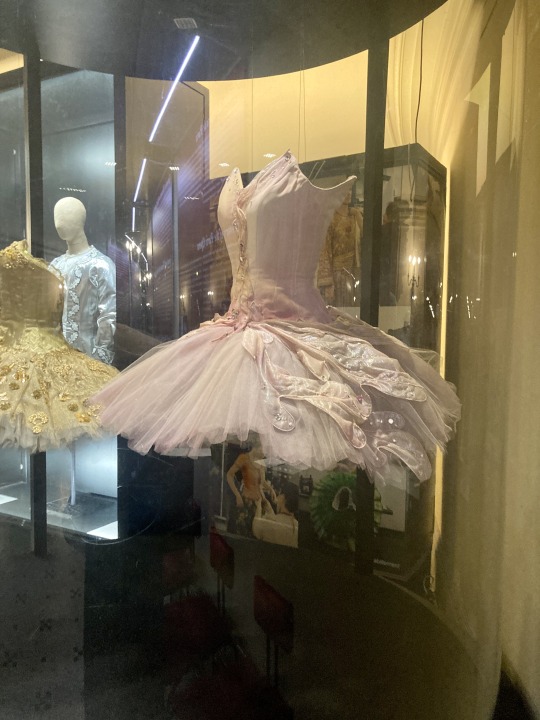
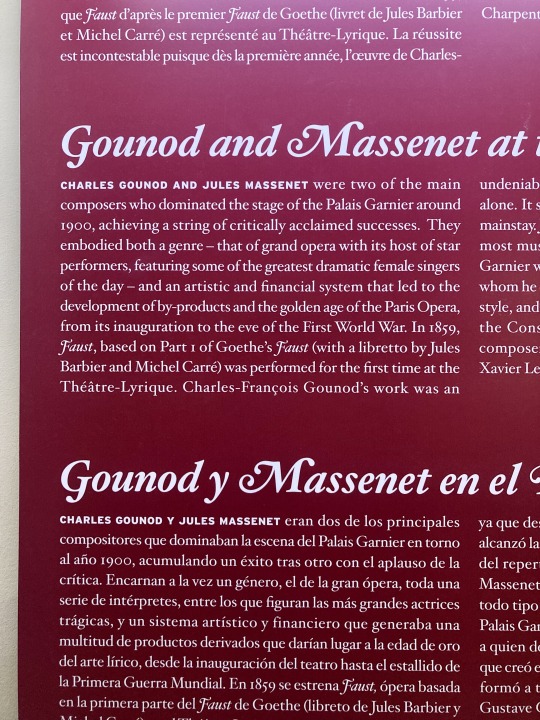
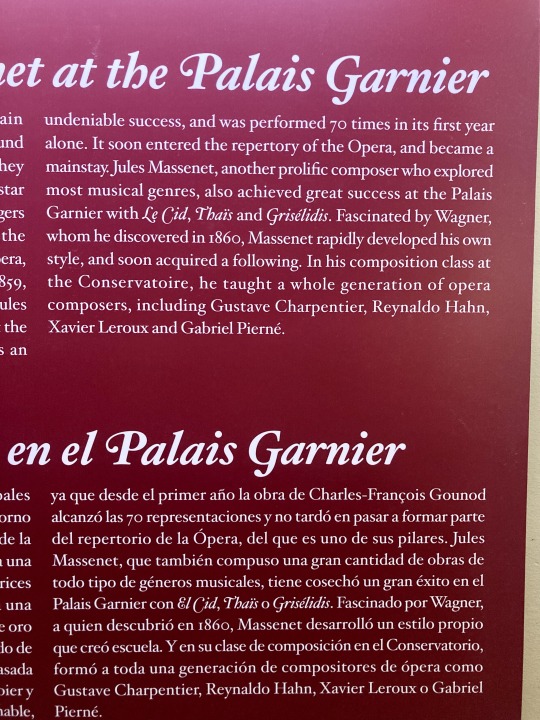
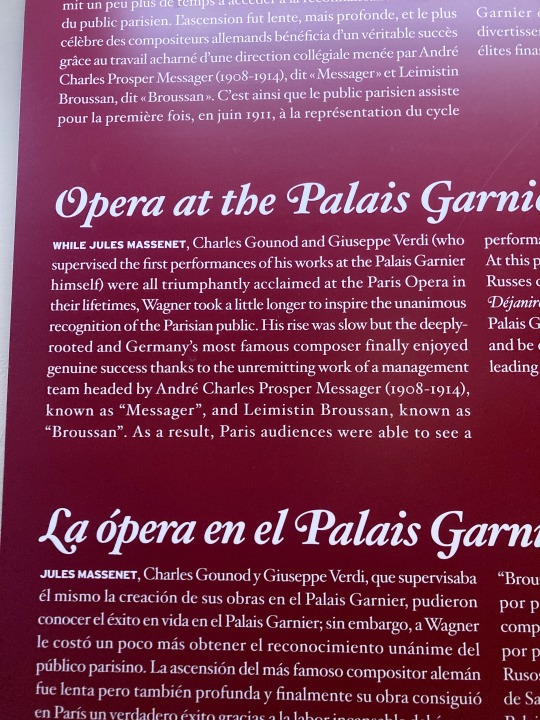

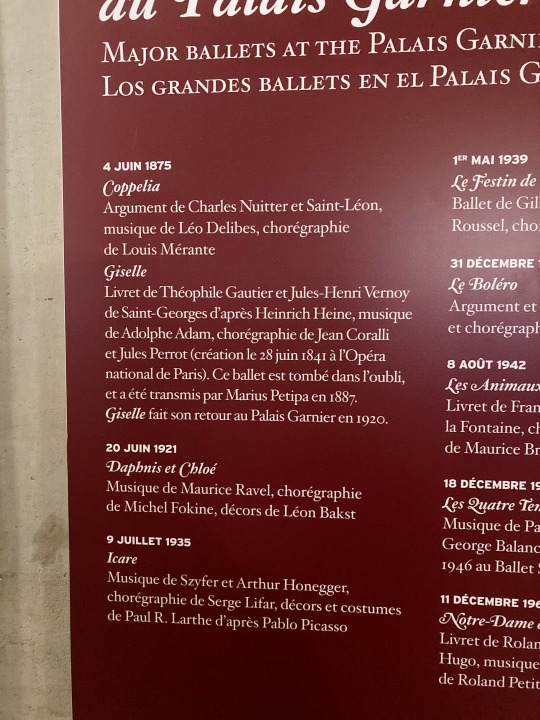


Took some photos of the exhibit up at the Opera Garnier for my own (cough cough) research purposes and thought it might be helpful for others! Thought the Don Quixote dress looked awfully familiar!
Transcript of the information under the cut:
Gounod and Massenet at the Palais Garnier
Charles Gounod and Jules Massenet were two of the main composers who dominated the stage of the Palais Garnier around 1900, achieving a string of critically acclaimed successes. They embodied both a genre - that of grand opera with its hoses of star performers, featuring some of the greatest dramatic female singers of the day - and an artistic and financial system that led to the development of by-products and the golden age of the Paris Opera from its inauguration to the eve of the First World War. In 1859, Faust, based on Part 1 of Goethe's Faust (with a libretto by Jules Barbier and Michel Carre) was performed for the first time at the Theater-Lyrique. Charles-Francois Gounod's work was an undeniable success and was performed 70 times in its first year alone. It soon entered the repertory of the Opera and became a mainstay. Jules Massenet, another prolific composer who explored most musical genres, also achieved great success at the Palais Garnier with Le Cid, Thais, and Griselidis. Fascinated by Wagner, whom he discovered in 1860, Massenet rapidly developed his own style, and soon acquired a following. In his composition class at the Conservatoire, he taught a whole generation of opera composers, including Gustave Charpentier, Reynaldo Hahn, Xavier Leroux, and Gabriel Pierne.
Opera at the Palais Garnier around 1900
While Jules Massenet, Charles Gounod, and Giuseppe Verdi (who supervised the first performances of his words at the Palais Garnier himself) were all triumphantly acclaimed at the Paris Opera in their lifetimes, Wagner took a little longer to inspire the unanimous recognition of the Parisian public. His rise was slow but the deeply-rooted and Germany's most famous composer finally enjoyed genuine success thanks to the unremitting work of a management team headed by Andre Charles Prosper Messager (1908-1914) known as "Messager", and Leimistin Broussan, known as "Broussan". As a result, Paris audiences were able to see a performance of the entire Ring cycle for the first time in June 1911. At this period, the Palais Garnier hosted Serge Diaghilev's Ballet Russes company, and Richard Strauss' Salome and Saint-Saens Dejanire both entered the repertory. During the Belle Epoque, the Palais Garnier was one of the chief places for Paris society to meet and be entertained, with an audience of subscribers made up of leading financiers, industrialists, and politicians.
Major Ballets at the Palais Garnier
4 June 1875
Coppelia - Argument de Charles Nuitter et Saint-Leon, Musique de Leo Delibes, choregraphie de Louis Merante
Giselle - Livret de Theophile Gautier et Jules-Henry Vernoy de Saint-Georges d'apres Heinrich Heine, musique de Adolphe Adam, choregraphie de Jean Coralli et Jules Perrot (creation le 28 Juin 1841 a l'opera national de Paris). Ce ballet est tombe dans l'oubli, et a ete transmis par Marius Petipa en 1887. Giselle fait son retour au Palais Garnier en 1920
20 Juin 1921
Daphnis et Chloe
musique de Maurice Ravel, choregraphie de Michel Fokine, decors de Leon Bakst
9 Jullet 1935
Icare
Musique de Szyfer et Arthur Honegger, choregraphie de Serge Lifar, decors et costumes de Paul R Larthe d'apres Pablo Picasso
13 notes
·
View notes
Photo

Bronislava Nijinska (January 8, 1891 [O.S. December 27, 1890] – February 21, 1972) was a Polish ballet dancer, and an innovative choreographer. She came of age in a family of traveling, professional dancers.
Her own career began in Saint Petersburg. Soon she joined Ballets Russes which ventured to success in Paris. She met war-time difficulties in Petrograd and revolutionary turbulence in Kiev. In France again, public acclaim for her works came quickly, cresting in the 1920s. She then enjoyed continuing successes in Europe and the Americas. Nijinska played a pioneering role in the broad movement that diverged from 19th-century classical ballet. Her introduction of modern forms, steps, and motion, and a minimalist narrative, prepared the way of future works
Following serious home training, she entered the state ballet school in the Russian capital at the age of nine. In 1908 she graduated as an 'Artist of the Imperial Theatres'. An early breakthrough came in Paris in 1910 when she became a member of Diaghilev's Ballets Russes. For her dance solo Nijinska created the role of Papillon in Carnaval, a ballet written and designed by Michel Fokine.
She assisted her famous brother Vaslav Nijinsky as he worked up his controversial choreography for L'Après-midi d'un faune, which Ballets Russes premiered in Paris in 1912. Similarly, she aided him in his creation of the 1913 ballet The Rite of Spring.
She developed her own art in Petrograd and Kiev during the Great War, Revolution and Civil War. While performing in theaters, she worked independently to design and stage her first choreographies. Nijinska started a ballet school on progressive lines in Kiev. She published her writing on the art of movement. In 1921 she fled Russian authorities.
Rejoining the Ballets Russes, Diaghilev appointed her the choreographer of the influential ballet company based in France. Nijinska thrived, creating several popular, cutting-edge ballets to contemporary music. In 1923, with a score by Igor Stravinsky she choreographed her iconic work Les noces [The Wedding].
Starting in 1925, with a variety of companies and venues she designed and mounted ballets in Europe and the Americas. Among them were Teatro Colón, Ida Rubinstein, Opéra Russe à Paris, Wassily de Basil, Max Reinhardt, Markova-Dolin, Ballet Polonaise, Ballet Theatre, the Hollywood Bowl, Jacob's Pillow, Serge Denham, Marquis de Cuevas, as well as her own companies.
Due to war in 1939 she relocated from Paris to Los Angeles. Nijinska continued working in choreography and as an artistic director. She taught at her studio. In the 1960s for The Royal Ballet in London, she staged revivals of her Ballets Russes-era creations. Her Early Memoirs, translated into English, was published posthumously.
#Bronislava Nijinska#XIX century#XX century#people#portrait#photo#photography#Black and White#women in art#women in ballet
19 notes
·
View notes
Photo
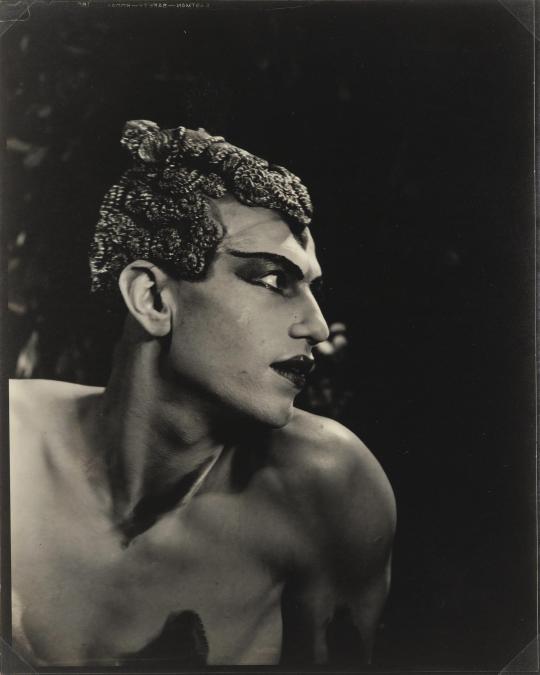
Serge Lifar in Le Prélude à l'après-midi d'un Faune, 1932
Ph. George Platt Lynes
237 notes
·
View notes
Text

Jacques-Emile Blanche (1861-1942)
Portrait by Jacques-Émile Blanche of Ida Rubinstein as Zobeïde in Schéhérazade
Ida Rubinstein (1885–1960) was born in Kharkov to a wealthy Jewish family. When her parents died, she was sent to live with her aunt in St. Petersburg, where she was introduced to the prominent artists of the city. She trained first as an actor, and then engaged Michel Fokine to give her ballet lessons and to provide the choreography for her projected production of Salomé, in which she was to take the title role. With music by Alexander Glazunov and costumes by Léon Bakst, Salomé was to have been performed in November 1908, but the production was banned and did not take place. This marked the first of Rubinstein’s many collaborations with Bakst, who remained her friend until the artist’s death. Rubinstein made a sensation in her appearance with the Ballets Russes in the initial 1909 season as Cleopatra, and again in 1910 in the role of Zobeïde, the Shah’s favorite wife, in the ballet Schéhérazade. Rubinstein did finally perform the role of Salome, as actor and dancer in the Oscar Wilde play, in Paris, in 1912.
Copyright © 2023 President and Fellows of Harvard College
13 notes
·
View notes
Photo

Leon Bakst@artistbakst·
The Firebird, Michel Fokine as tsarevitch, 1910
20 notes
·
View notes
Text
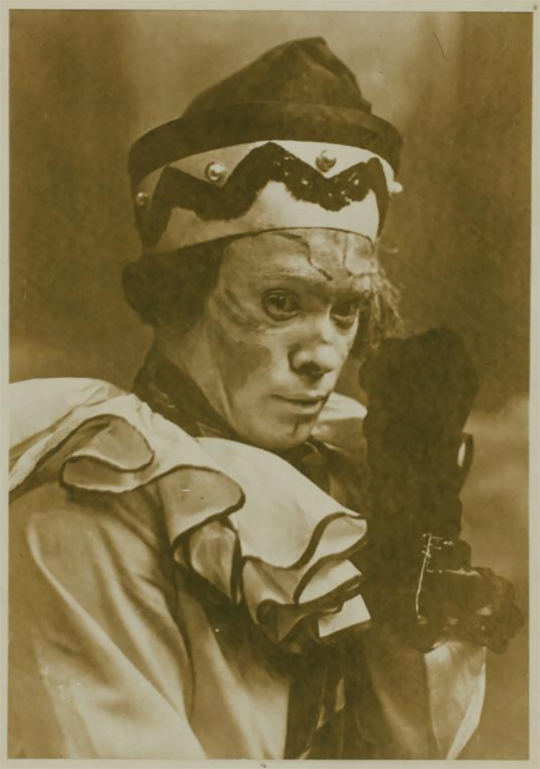
Portrait of Vaslav Nijinsky in three-quarter profile, left fist clenched before him in the title role of Petrouchka (a rag doll), 1910-1911.
Petrouchka (Choreographic work: Michel Fokine); uncredited photographer on source | src NYPL
view more on wordPress
#vaslav nijinsky#nijinsky#waslaw nijinsky#petrushka#petrouchka#fokine ballet#michel fokine#mikhail fokine#ballets russes#1910s#role portrait#rag doll#uncredited photographer#NYPL#Tänzer#male dancer#danseur
86 notes
·
View notes
Text
shoutout to the person who said one of the things on their list of bi media is "controversial 1912 ballet L'Après-midi d'un Faune" which I've looked up and learned was widely criticized for being too horny and caused vaslav nijinsky and michel fokine to break up as friends bc it was too hard for fokine to teach nijinsky's wack choreography to the other dancers
9 notes
·
View notes